Objectives of Water Pollution Control...
Systems designed to remove waterborne wastes from communities, industries, and so on while protecting the health of people
and the environment. (1) to collect wastewater from residences, industries, institutions, and so on, (2) to find a place to
discharge the wastewate (usually the nearest water course is chosen, but wastewater could also be used for groundwater
recharge or even recycled to water supply), (3) to remove water polluants that would produce adverse impacts to the
receiving water or adversely affect the health of people subsequently using the water and (4) to do all the above in a
cost - effective manner.
Examples of Water Pollutants of Concern...
Biochemical oxygen demand (BOD) : Oxygen demanding materials that deplete the oxygen content of the receiving
waters.
Suspended solids : Causes the water to be turdid and contain other pollutants.
Pathogens : Disease - causing microorganisms, usually associated with fecal matter (fecal coliforms are indicator
organisms).
Nutrients such as phosphorus and nitrogen : Cause accelerated growth of aquatic plants.
Toxic chemicals : Heavy metals such as mercury, cadmium, and chromium and organic chemicals such as pesticides,
industrial solvents, and gasoline.
Ammonia : Toxic to fish.
Wastewater Collection Systems...
A system of pipes (sewers) to collect water and associated wastes. Sanitary Sewers : drain wastewater from homes,
commercial establishments, institutions, industries, and so on. Storm Sewers : collect storm runoff and associated
wastes so as to minimize flooding within community. Design of wastewater collection systems is a hydraulics problem.
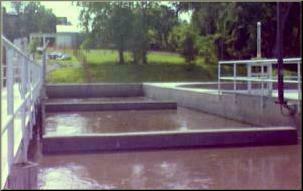
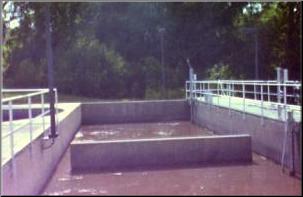

Wastewater Treatment...
Wastewater can be treated to several levels - each level removing successively more pollutants than the last. The various
levels of wastewater treatment are summarized as follows :
Pretreatment...
Objective of Treatment : To remove pollutants from wastewater at their source - usually industrial. Typical
Methods of Treatment : Pollution prevention, waste minimization, wastewater treatment at source. Removal Efficiencies :
Depends on pollutant and source.
Preliminary Treatment...
Objective of Treatment : To remove or reduce size of large solids to protect equipment. Typical Methods of
Treatment : Bar screens, comminutors, grit chambers. Removal Efficiencies : Not applicable (waste strength
measured after this level of treatment.
Primary Treatment...
Objective of Treatment : To remove settleable and floatable solids. Typical Methods of Treatment :
Sedimentation tanks (rectangular and circular), microscreens. Removal Efficiencies : 40 to 60 % of suspended
solids, ~ 30 % of BOD, ~ 50 % of fecal coliforms, little or no nitrogen or phosphorus is removed.
Secondary Treatment...
Objective of Treatment : To remove additional SS and soluble BOD. Typical Methods of Treatment : Activated
sludge, trickling filters, rotating disks, lagoons. Removal Efficiencies : 80 to 90 % of suspended solids and BOD,
90 to 99 % of fecal coliforms, ~ 10 % of nitrogen and phosphorus.
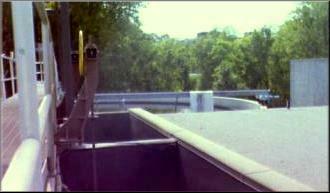
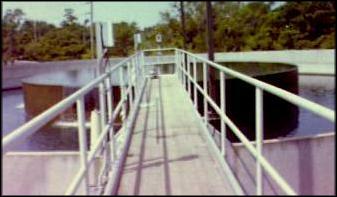
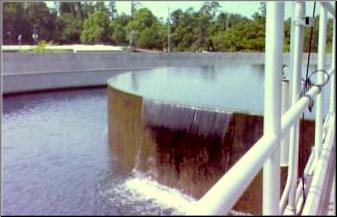
Advanced Treatment...
Objective of Treatment : To remove nitrogen and phosphorus and additional suspended solids and BOD and other
pollutants, as necessary. Typical methods of treatment and removal efficiencies ; Phosphorus removal : Chemical
addition ~ 80 - 90 % P removal, Nitrogen removal : Ammonia stripping - ~ 90 % removal of ammonia, Nitrification -
over 90 % conversion of ammonia to nitrate, activated sludge, rotating disks, Denitrification - conversion of nitrate to
nitrogen gas, BOD & SS removal : Rapid sand filter - to ~ 5 mg / L BOD and SS, Disinfection : Chlorination -
99.99 + % fecal colifomrs destroyed, other chemicals (O3), UV light, Toxic chemicals : Activated carbon -
high removal rates possible.
Sludge and Solids Handling...
Objective of Treatment : To reduce volume of sludge, to stabilize organic solids, and to recover resources. Typical
Methods of Treatment : Thickening, chemical addition, centrifugation, filtration, digestion, incineration.
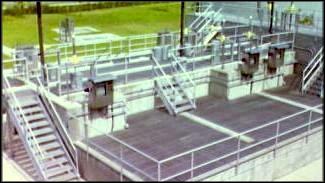
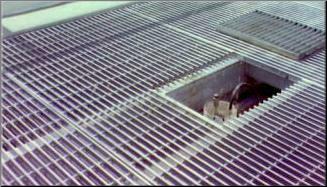
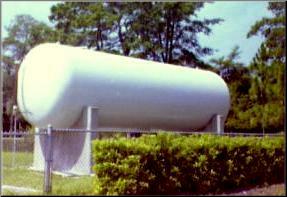
Disposal...
Objective of Process : To place effluent and residues in "safe" places. Typical Methods : Treated wastewater -
receiving waters and land application, Solids - land application and landfills.

















